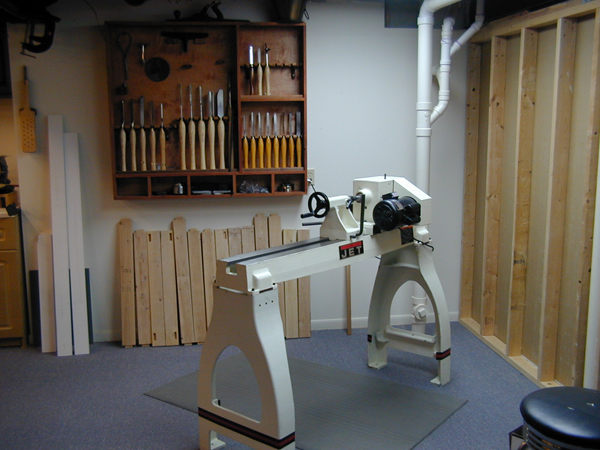My first lathe was setup closer to the wall, much like you describe. For making boxes and other spindle work it was fine. I didn't have a dust collection system at that time and was not turning large bowls. I didn't have a need for long tools handles for what I was doing then. I did pull a box blank out of the chuck, using the Raffan backhollowing technique. I was able to catch it with my wrist after it bouned off the wall. Didn't hurt the Mesquite one bit. I had put one of those plastic carpet protectors like you find in offices as a wall protector - didn't hurt it either. And the swelling did go down.
I made a table that went between my lathe and the wall, putting the lathe 30" away from the wall. That was the best thing I did. I now have a dust collection hood right behind the area where the dust comes off. It sets on the table and can be moved around to suit the various size bowls I turn. It can also be moved very close for boxes. I also have a place to lay tools that I am using. They are across the bed at the end of the lathe so I don't have to reach across the work. The lathe is 51" between centers so I have a lot of unused space most of the time. I also use it as a place to keep some of the box blanks I am working on. When I had the shorter lathe there, I had a tray that say across the ways and used the table for box blanks only.
Now that I have a 24" lathe, I am making some 22"-23" bowls and have some long handeled gouges and scrapers. The 30" spacing seems to work good for what I am doing and I would never put my lathe up against the wall again. You might try your lathe up against the wall and see if it works for you. I think it all depends on what you are doing. For boxes, it wouldn't matter - except for the dust collection. Large bowls would be a different story. Again, the only way to find out is to try it for yourself.
I solved the lighting by installing both a Moffet light, which is fixed to my dust collection hood, and a track spot light. These go along with the half dozen florescent fixtures around my lathe. The spot is aimed for just in front of the spindle and makes a world of difference.


